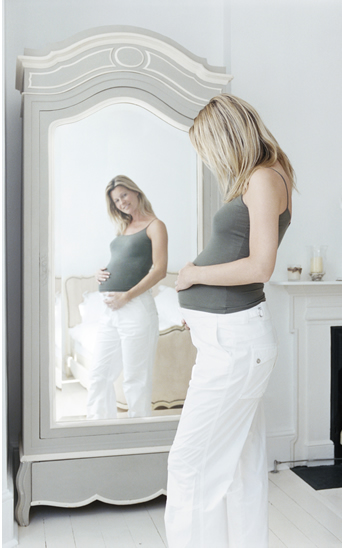
Hormonal changes in women during pregnancy
During pregnancy, a woman experiences an important change , both physical and mental, motivated by substances that are manufactured during this period: gestational hormones . Follicle Stimulating Hormone, Luteinizing Hormone, Chorionic Gonadotropin, Estrogens, Progesterone and Placental Lactogen play a fundamental role in the achievement and maintenance of pregnancy.
From the first day of the hormonal cycle , the fertile woman’s body prepares itself so that in the event of a pregnancy, it is housed in the best conditions. During the first part of the cycle, the ovum grows due to the effect of Follicle Stimulating Hormone (FSH) on the ovary. At the same time, the inner layer of the uterus or endometrium grows thanks to estrogen .
Once the ovum that is inside the ovarian follicle is sufficiently grown, Luteinizing Hormone (LH) intervenes, causing ovulation, at which point the follicle ruptures and the ovum is taken up by the fallopian tubes , where it will be produced. the union with the sperm: fertilization .
From the moment the egg and sperm unite, there is an increase in progesterone , which has just prepared the endometrium for the implantation of the embryo.
The union of the cells produces a division of these in the tubes and, at the same time, they move smoothly through small movements of the tube (movements called soft expression).
The amount of hormones is changing minute by minute. Chorionic Gonadotropin Hormone (HCG) begins to be manufactured, which is only produced during pregnancy by the placenta. This hormone increases dramatically during the first weeks, reaching a maximum peak between 7 and 8 weeks of pregnancy , after which it decreases until it remains stable with greatly decreased levels.
As the pregnancy progresses, and from the first weeks, the amount of estrogens increases until the end of the pregnancy. The estrogen is the hormone responsible for the physical changes , both internal and external, of the mammary gland. The internal ducts of the breast divide and prepare for the production of milk. This hormone seems to be in charge of maintaining a good exchange between the fetus’s circulation and the mother’s circulation.
Progesterone, after fertilization, remains balanced until week 10, in which it begins to rise until the end of pregnancy, especially from week 32. This hormone plays a very important role in implantation, preparing the endometrium for it. .
There is another hormone, Placental Lactogen (HPL), which is only manufactured during pregnancy from week 10 in charge of the newly formed placenta. Levels progressively increase until reaching a peak just 4 weeks before giving birth. It performs a very important function such as regulating or stimulating fetal growth through complicated mechanisms and thus allowing the evolution of gestation. Another function attributed to it is the preparation together with estrogen of the mammary gland for lactation.
Many of the functions of gestational hormones are still unknown but science is taking giant steps and we will come to understand all the changes and functions promoted by these substances.




















+ There are no comments
Add yours